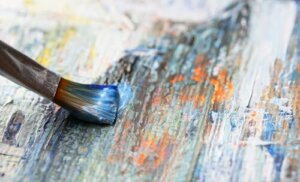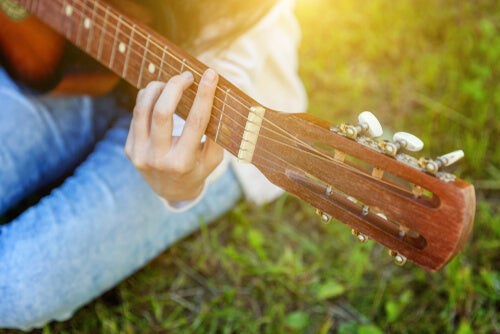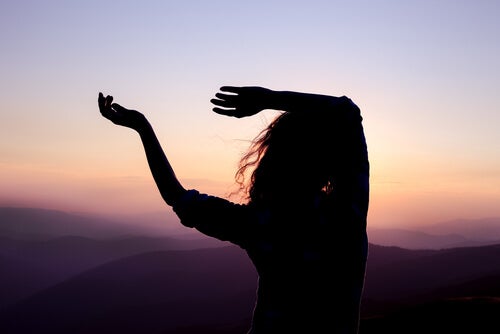Art and Post-Conflict Recovery: Transforming Lives

When people are born, grow up, live through, survive, and witness the suffering of many in an environment of violence, it’s difficult to draw strength from it in order to maintain one’s desire to live. This is even the case when the violence has ceased and there’s talk of restoration. However, there’s a way to transform these overwhelming realities, and we can find the link between art and post-conflict recovery.
When we speak of post-conflict recovery, we’re referring to the events that follow after peace agreements have put an end to the conflict. Thus, what do art and post-conflict recovery have to do with each other and how can they help to transform realities?

What’s the link between art and post-conflict recovery?
Art and post-conflict recovery are related in different ways. Let’s look at some of them:
- Both are a way of talking about what happened. They’re a way of telling stories in the times of post-conflict. According to the article “The post-conflict recovery in Colombia: A challenge for psychiatry“, this can happen in different ways. Support and recovery can occur through activities of attention to the victims. These can include the creation of resources and employment; and the adaptation and strengthening of institutions. In addition to this, there are social processes to offer forgiveness and reconciliation, among other factors. In art, healing can come through creative processes, exhibitions, and the people who go see them.
- Through both these aspects, we can show shared stories. In post-conflict events, we can show the reality of the violence experienced by a community or a family, for example. Through art, we can represent collective issues.
Emotions
- Both these perspectives touch the innermost parts of human beings. This is because both of them affect emotions, thoughts, and behaviors. In post-conflict times, the traumatic experiences evoke a whole series of emotions. By using art, we can bring unconscious processes to the fore, either through the creation of the artwork or when people see the work created. All of this according to the stories of the individual people involved.
- Both these processes are a way of transforming anguish. In the post-conflict period, care is taken to ensure rebuilding. Here, we’re talking about activities that help to transform, manage, and end the confrontation, in order to preserve peace and build or rebuild what people have lost. Moreover, through creative art processes, we can transform the pain as a way of remodeling the traumatic situation we’re living through.
The most important connection between art and post-conflict recovery is that, through different activities, they can help to rebuild the brokenness. They can emphasize rebuilding what the trauma has left behind.
Art, a transforming element of post-conflict realities
Art can be a transforming element of realities because it’s a form of language, and, therefore, allows us to express ourselves. However, after a traumatic experience, it’s very difficult to put into words what’s happened, and even to be able to recognize and express it.
Therefore, in these cases, art could function as a vehicle that allow people to express themselves.
How could this work, though? Well, traumas can be difficult for our consciousness to access. We can feel a sea of emotions and thoughts that we don’t know how to manage. Through art, we can begin to process these things, and, with the help of artistic creation, we can start to rebuild, step by step, all those broken things inside us.
A proven tool
Therefore, art is a tool that many people have used in post-conflict recovery processes. The reasons for this is that it can:
- Help to build a collective language.
- Lead to a sense of affection. This is because, through collective creative processes, you can create identity, empathy, and even motivation to go on. It can also motivate people to do things for, and with, the community.
- Protect from isolation, because, through art, people can connect with themselves, and with others.
- Help people to realize the extent of the trauma and motivate them to seek support, either by means of art or through other forms such as psychotherapy.
Art can transform realities because it’s a way of stopping people from being prisoners of their own past and freeing them from their suffering. Rather, it motivates people to try to learn another way of living with what happened. Because of this, it’s a kind of bridge that can help people to transform the things that have overwhelmed them into something that’s healthier for their minds.
After a period of violence, it’s never going to be an easy road. However, art can be the means to help a person delve into the situation that caused them harm.
However, the process won’t occur if there isn’t any initiative or a desire to change. On the other hand, we should note that there are groups, as well as political, social, and educational strategies, that study every post-conflict process. They do so to ensure that the process is carried out in the best possible way, as each conflict is unique in its own right.

Art, resilience, and post-conflict recovery
As art leads us to transform traumatic realities, it can also be a factor to increase resilience. This is what Boris Cyrulnik, a French neurologist, psychiatrist, and psychoanalyst, tells us. He’s an expert in the processes of art, conflict, and resilience, and is well-placed to inform us.
Cyrulnik invites us to initiate resilience processes in the post-conflict period and sees art as a useful tool to develop this capacity. In fact, he gave a lecture called “Resilience and Art: The Tales of Trauma” in which he emphasized how, in Colombia, after more than 50 years of war, was able to use art as a valuable element to cultivate the capacity to overcome adversity. He has also written several books associated with resilience, for example, The Wonder of Pain: The Sense of Resilience.
There are countless ways to make resilience germinate through art. For example:
- Cinema.
- Opera.
- Literature.
- Photography.
- Painting.
- Music.
In addition, Cyrulnik considers psychotherapy another art form. He believes that it can help transform traumas, as those who guide this therapy transform the anguish into a language that’s understandable to the person who experienced the traumatic experience.
Conclusions
Art is transformative if we use it properly, as it can help to promote individual and collective resilience in people who have lived through trauma as a result of war.
It isn’t the only option. However, it’s one that, through its forms of expression, can create ways for people suffering intense pain to be motivated and move forward. It’s a form of liberation from the past.
Let’s release the effects of war, with its associated pain and anguish, and arm ourselves with elements of art. It will surely help to transform people and be an instrument for peace for ourselves and our community. In this way, we really will be able to move towards true well-being in post-conflict recovery.
All cited sources were thoroughly reviewed by our team to ensure their quality, reliability, currency, and validity. The bibliography of this article was considered reliable and of academic or scientific accuracy.
- Gómez-Restropo, C. (2003). El posconflicto en Colombia: desafío para la psiquiatría. Revista colombiana de psiquiatría, 32 (2) 130-132.
- Lara, L., & Cyrulnik, B. (2009). Vencer el trauma por el arte. Cuadernos de pedagogía, (393), 42-47.
- Cyrulnik, B. (2001). La maravilla del dolor: el sentido de la resiliencia.
This text is provided for informational purposes only and does not replace consultation with a professional. If in doubt, consult your specialist.








